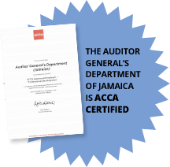
Thematic Map
The Department has incorporated a forward-looking approach in conducting audits for the next three years. In developing this approach, an assessment of our audit reports issued from April 2011 to November 2016 was undertaken to identify the common weaknesses across the MDAs. The findings were then classified under 19 sub-themes, which were then further analysed resulting in the identification of five key themes based on the characteristics and interrelatedness of the sub-themes.
Use of the Audit Themes
Each theme incorporates an analysis of our findings and the impact on the entities’ resources. Accordingly, we have included extracts from our audit reports, which illustrate the typical findings. It is envisaged that the themes will be used by the MDAs to assess the effectiveness of the internal controls and operational management of their entities as well as guide them in identifying appropriate solutions for inherent weaknesses.
The Auditor General’s Department utilizes five thematic areas when developing its annual audit plan. The areas identified were derived from a review of reports issued by the Auditor General’s Department which signaled the need for increased focus on these areas of corporate governance.




 LinkedIn
LinkedIn Twitter
Twitter Youtube
Youtube
